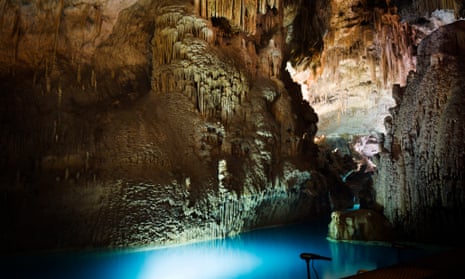The Jeita Grotto lies around 11 miles north of Beirut, in the Nahr al-Kalb valley. It is an extraordinary site which could be one of the wonders of the world but remains an intimate experience. It comprises two interconnecting karstic limestone caves, spanning 5½ miles.
There is a huge concentration of crystallised formations and extraordinary stone shapes, such as stalactites, stalagmites, columns, ponds and draperies.
Like looking up at the clouds, the shapes in the caves can be interpreted in many ways: a couple embracing, a rabbit running away, dust in the wind. Our son saw them as melted chocolate, vanilla ice-cream drippings and huge mushrooms.

To see the lower cave, we took a boat on the crystal-clear underground river, which feels like a fairytale – there is no scale of time or space. It is another territory, a parallel one, similar to the one we seek in art and cinema.
We know we’re underground but feel we’re also floating in space. Claustrophobia could be a worry but, in fact, we are dizzily overawed by the sheer scale of the place.

Comments (…)
Sign in or create your Guardian account to join the discussion